Calculation for Multidimensional Topological Relations in 3D Cadastre Based on Geometric Algebra
Abstract
1. Introduction
2. 3D Cadastral Object Expression in CGA
2.1. 3D Cadastral and Spatial Topological Features
2.2. CGA Representation of 3D Cadastral Structural Objects
2.2.1. Outer Product
2.2.2. Multivector
2.2.3. Boundary Points’ CGA Expression
2.2.4. Boundary Lines’ CGA Expression
2.2.5. Boundary Surfaces’ CGA Expression
2.3. Expression of Geometry and Topology of Cadastral Parcels in CGA
3. Methods
3.1. Overall Framework
3.2. Topological Space Operators
3.2.1. Grade Operator
3.2.2. GeoSpaceOP Operator
3.3. Calculation of Topological Relations between a Boundary Point and a Parcel
3.4. Calculation of Topological Relations between Boundary Lines and Parcels
4. Case Studies
5. Discussion
6. Conclusions
Author Contributions
Funding
Acknowledgments
Conflicts of Interest
References
- Ding, Y.; Jiang, N.; Yu, Z.; Ma, B.; Shi, G.; Wu, C. Extrusion Approach Based on Non-Overlapping Footprints (EABNOF) for the Construction of Geometric Models and Topologies in 3D Cadasters. ISPRS Int. J. Geo Inf. 2017, 6, 232. [Google Scholar] [CrossRef]
- Karki, S.; Thompson, R.; McDougall, K. Development of validation rules to support digital lodgement of 3D cadastral plans. Comput. Environ. Urban Syst. 2013, 40, 34–45. [Google Scholar] [CrossRef]
- Thompson, R.; Oosterom, P. Axiomatic Definition of Valid 3D Parcels, potentially in a Space Partition. In Proceedings of the 2nd International Workshop on 3D Cadastres, Delft, The Netherlands, 16–18 November 2011. [Google Scholar]
- Thompson, R.; Oosterom, P. Validity of Mixed 2D and 3D Cadastral Parcels in the Land Administration Domain Model. In Proceedings of the 3rd International Workshop on 3D Cadastres: Developments and Practices, Shenzhen, China, 25–26 October 2012. [Google Scholar]
- Guo, R.; Li, L.; Ying, S.; Luo, P.; He, B.; Jiang, R. Developing a 3D cadastre for the administration of urban land use: A case study of Shenzhen, China. Comput. Environ. Urban Syst. 2013, 40, 46–55. [Google Scholar] [CrossRef]
- Stoter, J.E.; Oosterom, P. Technological aspects of a full 3D cadastral registration. Int. J. Geogr. Inf. Sci. 2005, 19, 669–696. [Google Scholar] [CrossRef]
- Zhou, X.G.; Chen, J.; Zhan, F.B.; Li, Z.; Madden, M.; Zhao, R.L.; Liu, W.Z. A Euler number-based topological computation model for land parcel database updating. Int. J. Geogr. Inf. Sci. 2013, 27, 1983–2005. [Google Scholar] [CrossRef]
- Jaljolie, R.; van Oosterom, P.; Dalyot, S. Spatial Data Structure and Functionalities for 3D Land Management System Implementation: Israel Case Study. ISPRS Int. J. Geo Inf. 2018, 7. [Google Scholar] [CrossRef]
- Shojaei, D.; Olfat, H.; Faundez, S.I.Q.; Kalantari, M.; Rajabifard, A.; Briffa, M. Geometrical data validation in 3D digital cadaster—A case study for Victoria, Australia. Land Use Policy 2017, 68, 638–648. [Google Scholar] [CrossRef]
- Hanus, P.; Pęska-Siwik, A.; Szewczyk, R. Spatial analysis of the accuracy of the cadastral parcel boundaries. Comput. Electron. Agric. 2018, 144, 9–15. [Google Scholar] [CrossRef]
- Tse, R.O.C.; Gold, C. A proposed connectivity-based model for a 3-D cadastre. Comput. Environ. Urban Syst. 2003, 27, 427–4453. [Google Scholar] [CrossRef]
- Lee, B.M.; Kim, T.J.; Kwak, B.Y.; Lee, Y.H.; Choi, J. Improvement of the Korean LADM country profile to build a 3D cadastre model. Land Use Policy 2015, 49, 660–667. [Google Scholar] [CrossRef]
- Meyer, N. GIS and Land Records: The Arcgis Parcel Data Model; ESRI Press: Redlands, CA, USA, 2004. [Google Scholar]
- Kalantari, M.; Rajabifard, A.; Wallace, J.; Williamson, I. Spatially referenced legal property objects. Land Use Policy 2008, 25, 173–181. [Google Scholar] [CrossRef]
- Shojaei, D.; Olfat, H.; Rajabifard, A.; Darvill, A.; Briffa, M. Assessment of the Australian digital cadastre protocol (ePlan) in terms of supporting 3D building subdivisions. Land Use Policy 2016, 56, 112–124. [Google Scholar] [CrossRef]
- van Oosterom, P.; Lemmen, C.; Ingvarsson, T.; van der Molen, P.; Ploeger, H.; Quak, W.; Stoter, J.; Zevenbergen, J. The core cadastral domain model. Comput. Environ. Urban Syst. 2006, 30, 627–660. [Google Scholar] [CrossRef]
- ISO 19152 LADM. Geographic Information—Land Administration Domain Model; International Organization for Standardization (ISO): Geneva, Switzerland, 2012. [Google Scholar]
- Ying, S.; Guo, R.; Li, L.; Van Oosterom, P.; Stoter, J. Construction of 3D Volumetric Objects for a 3D Cadastral System. Trans. GIS 2015, 19, 758–779. [Google Scholar] [CrossRef]
- Zlatanova, S.; Rahman, A.A.; Shi, W. Topological models and frameworks for 3D spatial objects. Comput. Geosci. 2004, 30, 419–428. [Google Scholar] [CrossRef]
- Ding, Y.; Yang, Y.; Wu, C.; Shao, H.; Li, H. A multidimensional cadastral topological data model: Design and implementation. IEEE Access 2019, 7, 931–943. [Google Scholar] [CrossRef]
- Shojaei, D.; Kalantari, M.; Bishop, I.D.; Rajabifard, A.; Aien, A. Visualization requirements for 3D cadastral systems. Comput. Environ. Urban Syst. 2013, 41, 39–54. [Google Scholar] [CrossRef]
- Egenhofer, M.; Herring, J. Categorizing Binary Topological Relations between Regions, Lines, and Points in Geographic Databases; Technical Report; Department of Surveying Engineering, University of Maine: Orono, ME, USA, 1991. [Google Scholar]
- Schneider, M.; Behr, T. Topological relationships between complex spatial objects. ACM Trans. Database Syst. 2006, 31, 39–81. [Google Scholar] [CrossRef]
- Dube, M.P.; Barrett, J.V.; Egenhofer, M.J. From metric to topology: Determining relations in discrete space. In International Conference on Spatial Information Theory; Springer International Publishing: Cham, Switzerland, 2015. [Google Scholar]
- Egenhofer, M.J.; Dube, M.P. Topological relations from metric refinements. In Proceedings of the 17th ACM SIGSPATIAL International Conference on Advances in Geographic Information Systems, Seattle, WA, USA, 4–6 November 2009; p. 158. [Google Scholar]
- Wu, L. Topological relations embodied in a generalized tri-prism (GTP) model for a 3D geoscience modeling system. Comput. Geosci. 2004, 30, 405–418. [Google Scholar] [CrossRef]
- Shi, Y.; Zhang, L.; Li, L. Hybrid spatial data model for three dimensional cadastre. J. Remote Sens. 2013, 17, 320–334. (In Chinese) [Google Scholar]
- Wang, L.; Sun, Z.; Qu, X.; Wu, C. Study on the Data Model and Spatio-Temporal Relation of 3D Cadastre. J. China Land Sci. 2014, 28, 39–45. (In Chinese) [Google Scholar]
- Zhang, J.Y.; Yin, P.C.; Li, G.; Gu, H.H.; Zhao, H.; Fu, J.C. 3D cadastral data model based on conformal geometry algebra. ISPRS Int. J. Geo Inf. 2016, 5, 20. [Google Scholar] [CrossRef]
- Yuan, L.; Yu, Z.; Luo, W.; Yi, L.; Lü, G. Multidimensional-unified topological relations computation: A hierarchical geometric algebra-based approach. Int. J. Geogr. Inf. Sci. 2014, 28, 2435–2455. [Google Scholar] [CrossRef]
- Yu, Z.; Luo, W.; Yuan, L.; Hu, Y.; Zhu, A.X.; Lü, G. Geometric algebra model for geometry-oriented topological relation computation. Trans. GIS 2016, 20, 259–279. [Google Scholar] [CrossRef]
- Yuan, L.; Yu, Z.; Luo, W.; Yi, L.; Lü, G. Geometric algebra for multidimension-unified geographical information system. Adv. Appl. Clifford Algebras 2013, 23, 497–518. [Google Scholar] [CrossRef]
- Yuan, L.; Yu, Z.; Chen, S.; Luo, W.; Wang, Y.; Lü, G. CAUSTA: Clifford Algebra-based Unified Spatio-Temporal Analysis. Trans. GIS 2010, 14, 59–83. [Google Scholar] [CrossRef]
- Yuan, L.; Yu, Z.; Luo, W.; Hu, Y.; Feng, L.; Zhu, A.X. A Hierarchical Tensor-Based Approach to Compressing, Updating and Querying Geospatial Data. IEEE Trans. Knowl. Data Eng. 2015, 27, 312–325. [Google Scholar] [CrossRef]
- Yu, Z.; Luo, W.; Hu, Y.; Yuan, L.; Zhu, A.X.; Lü, G. Change detection for 3D vector data: A CGA-based Delaunay–TIN intersection approach. Int. J. Geogr. Inf. Sci. 2015, 29, 2328–2347. [Google Scholar] [CrossRef]
- Luo, W.; Hu, Y.; Yu, Z.; Yuan, L.; Lü, G. A Hierarchical Representation and Computation Scheme of Arbitrary-dimensional Geometrical Primitives Based on CGA. Adv. Appl. Clifford Algebras 2017, 27, 1977–1995. [Google Scholar] [CrossRef]
- Luo, W.; Yu, Z.; Yuan, L.; Hu, Y.; Zhu, A.X.; Lü, G. Template-based GIS computation: A geometric algebra approach. Int. J. Geogr. Inf. Sci. 2017, 31, 2045–2067. [Google Scholar] [CrossRef]
- Dorst, L.; Fontijne, D.; Mann, S. Geometric Algebra for Computer Science: An Object-Oriented Approach to Geometry; Morgan Kaufmann Publishers: San Francisco, CA, USA, 2007. [Google Scholar]
- Penvass, C. Applications of Geometric Algebra in Computer Vision. Ph.D. Thesis, Cambridge University, Cambridge, UK, 2000. [Google Scholar]
- Hildenbrand, D. From Grassmann’s vision to geometric algebra computing. In From Past to Future: Graßmann’s Work in Context; Springer: Berlin, Germany, 2011. [Google Scholar]
- Bayro-Corrochano, E.; Sobczyk, G. Applications of lie algebras and the algebra of incidence. In Geometric Algebra with Applications in Science and Engineering; Springer: Berlin, Germany, 2001. [Google Scholar]
- Hitzer, E. Introduction to Clifford’s geometric algebra. Sice J. Control Meas. Syst. Integr. 2012, 4, 1–10. [Google Scholar]
- Hitzer, E.; Sangwine, S.J. Quaternion and Clifford Fourier Transforms and Wavelets; Springer: Basel, Switzerland, 2013. [Google Scholar]
- Hitzer, E. Conic sections and meet intersections in geometric algebra. In Computer Algebra and Geometric Algebra with Applications; Springer: Berlin, Germany, 2005. [Google Scholar]
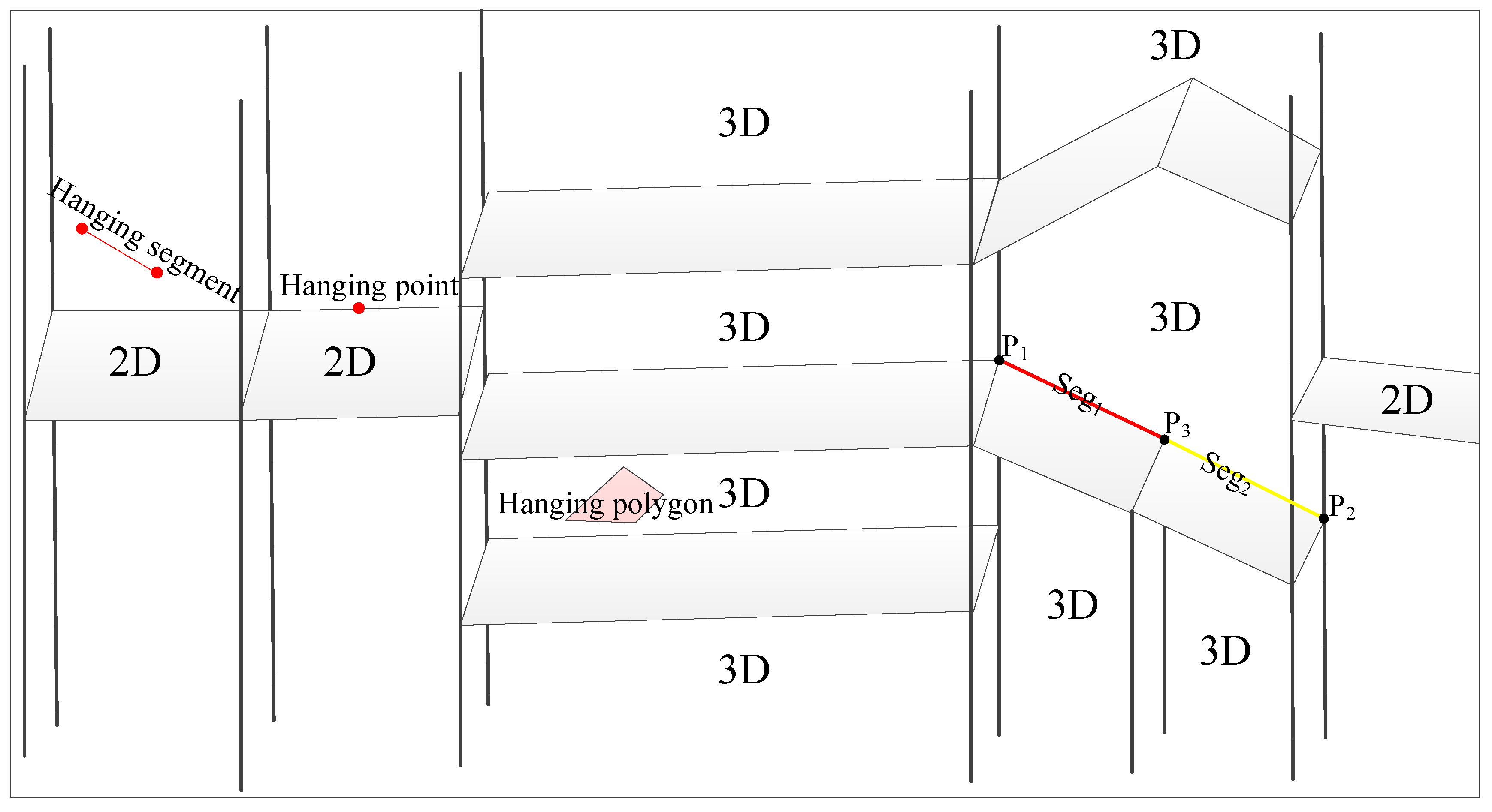
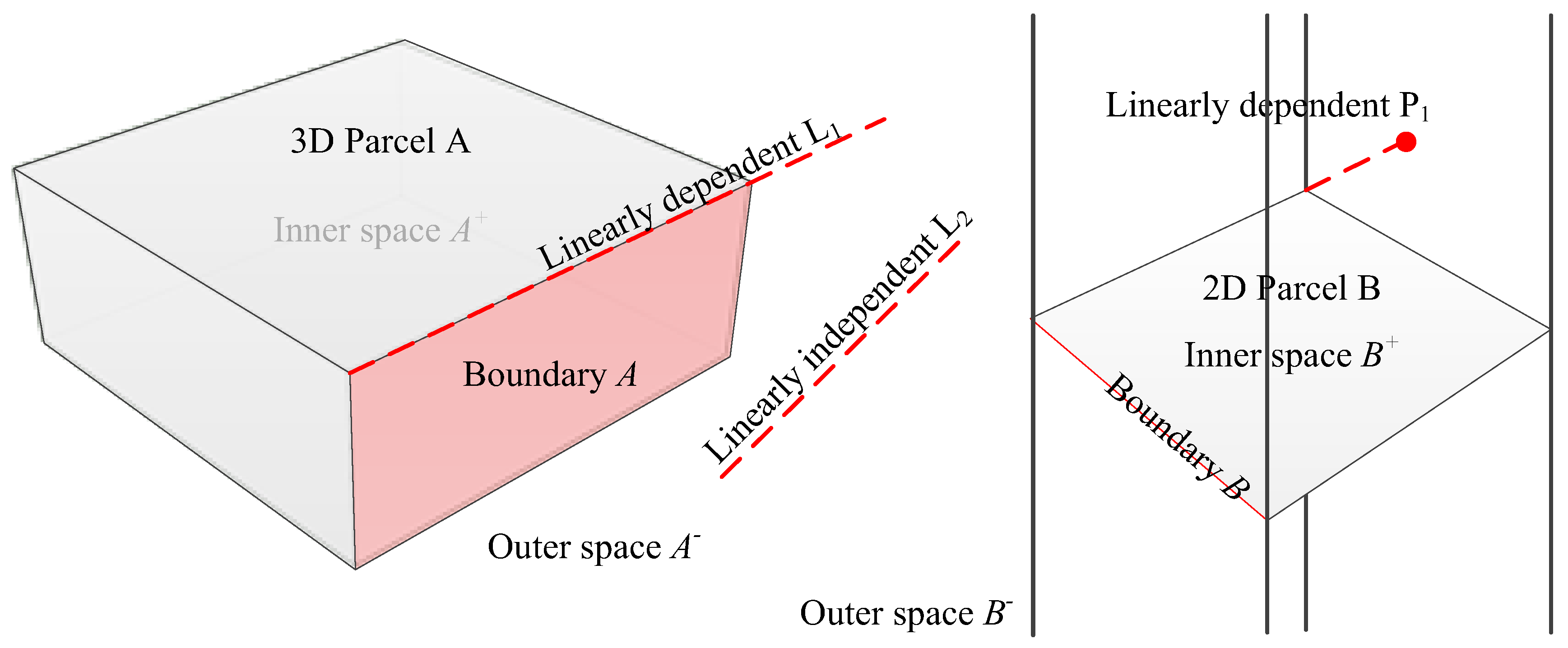
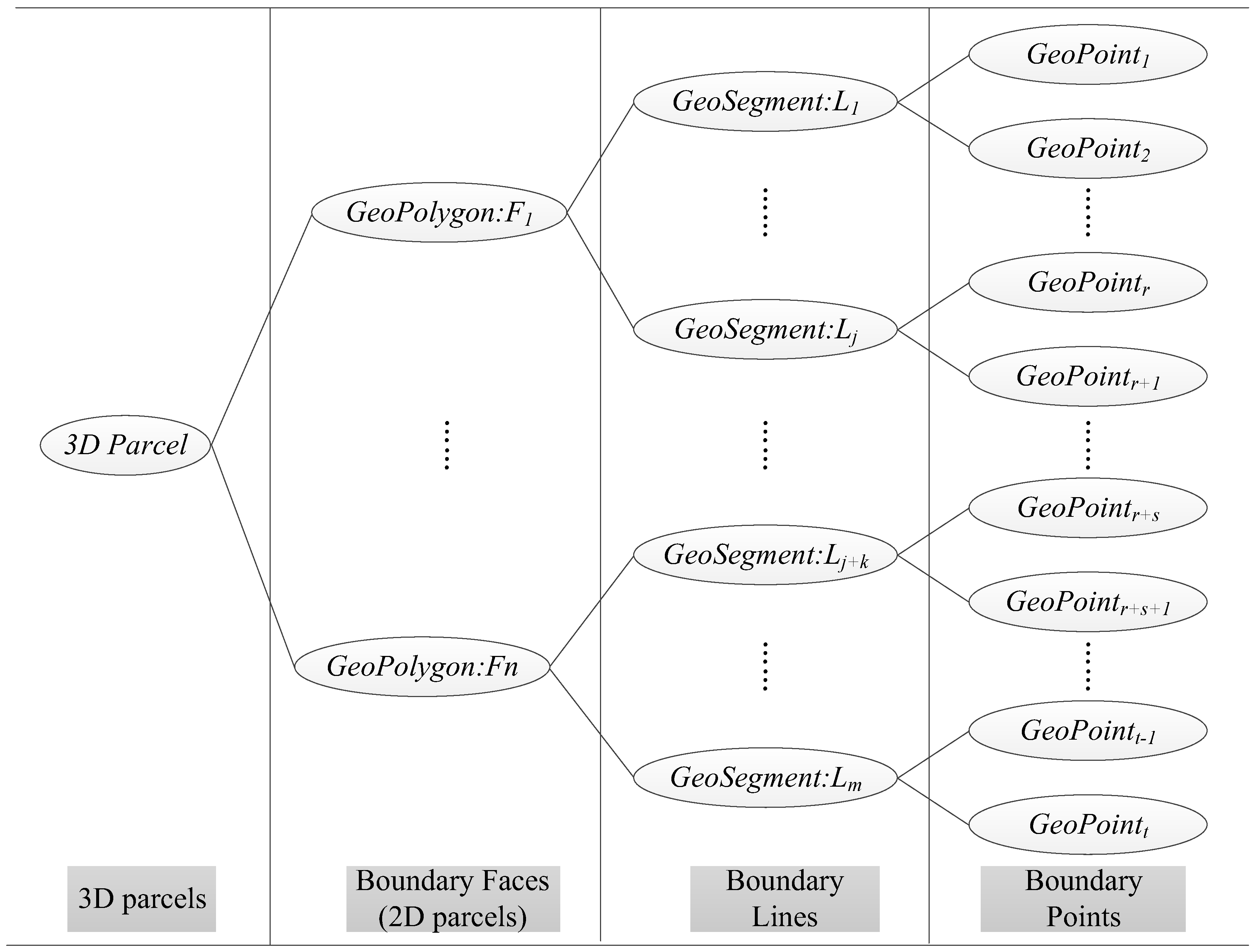
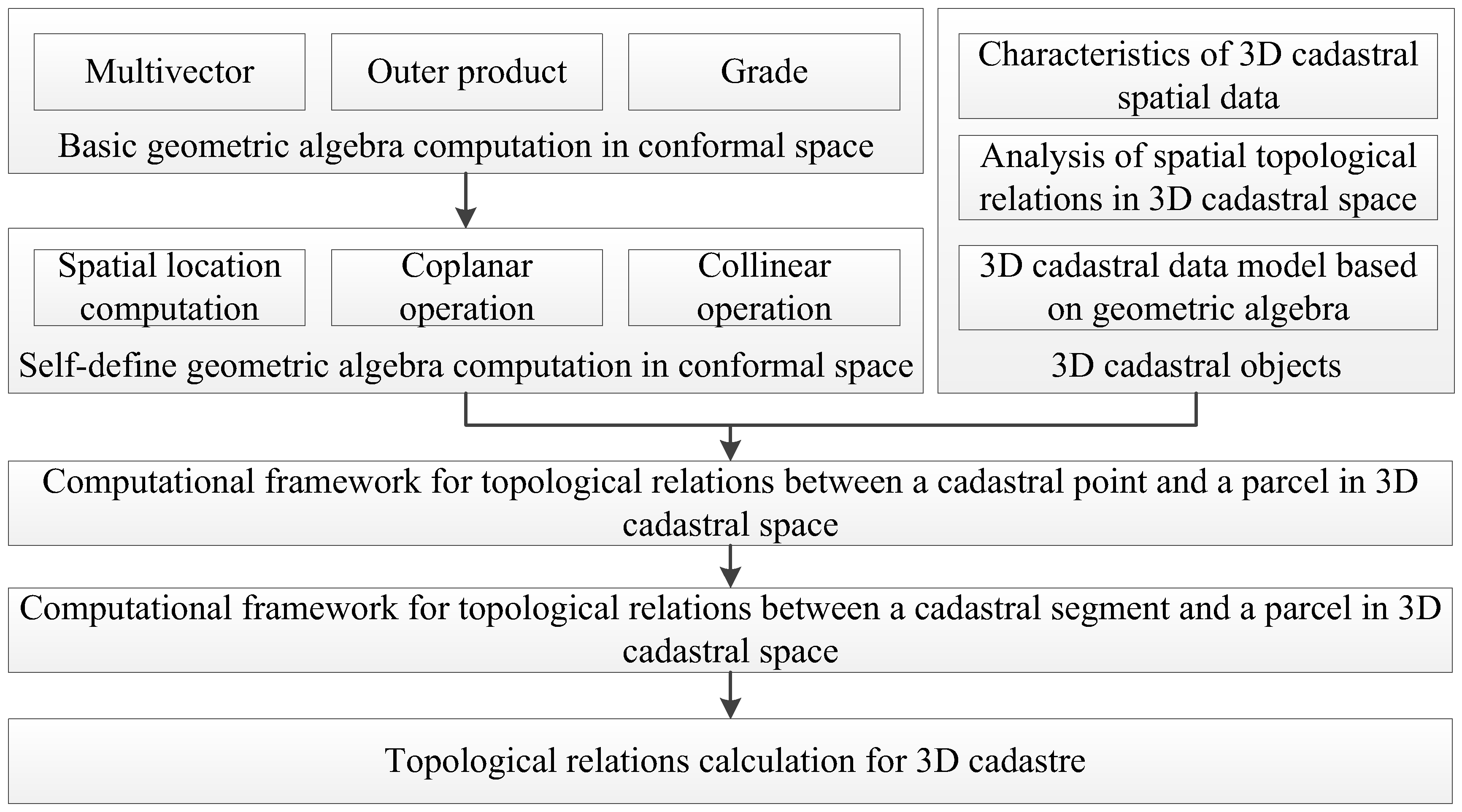
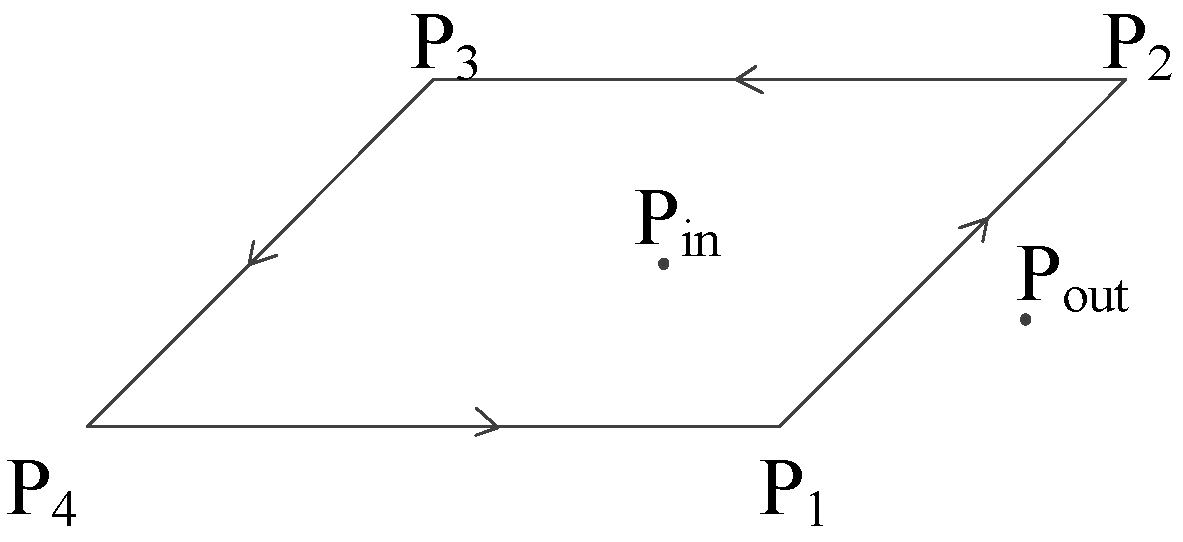
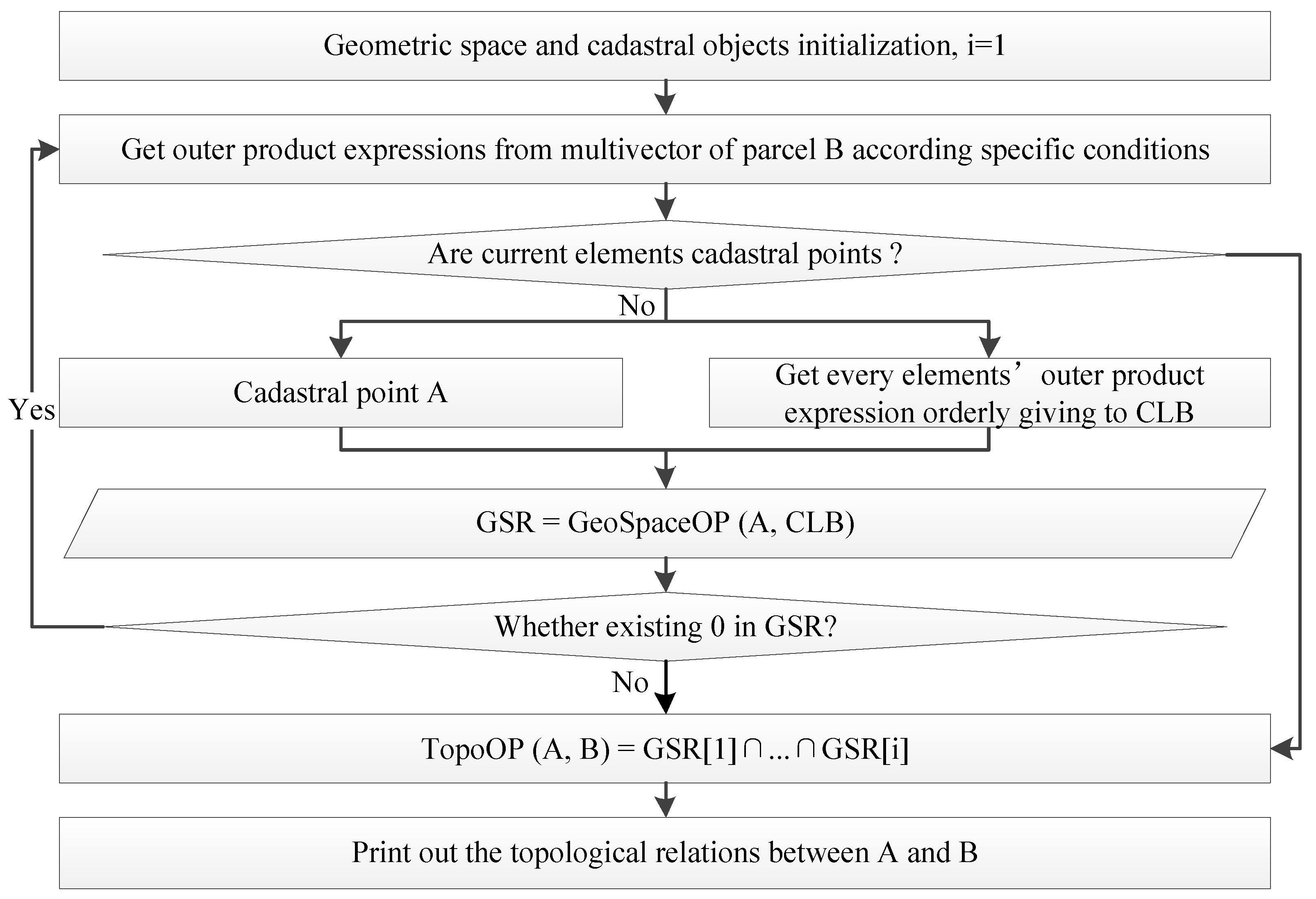
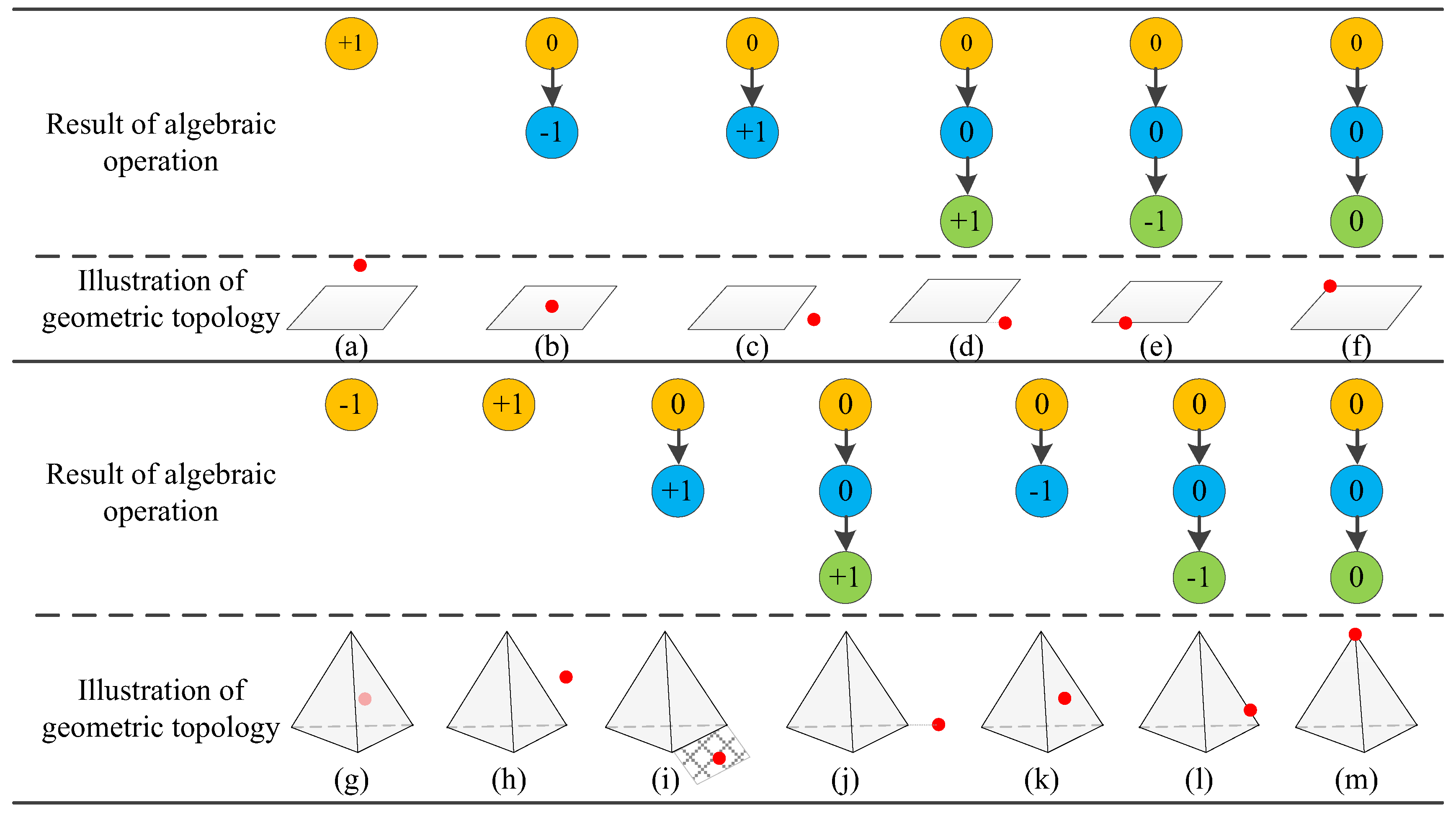
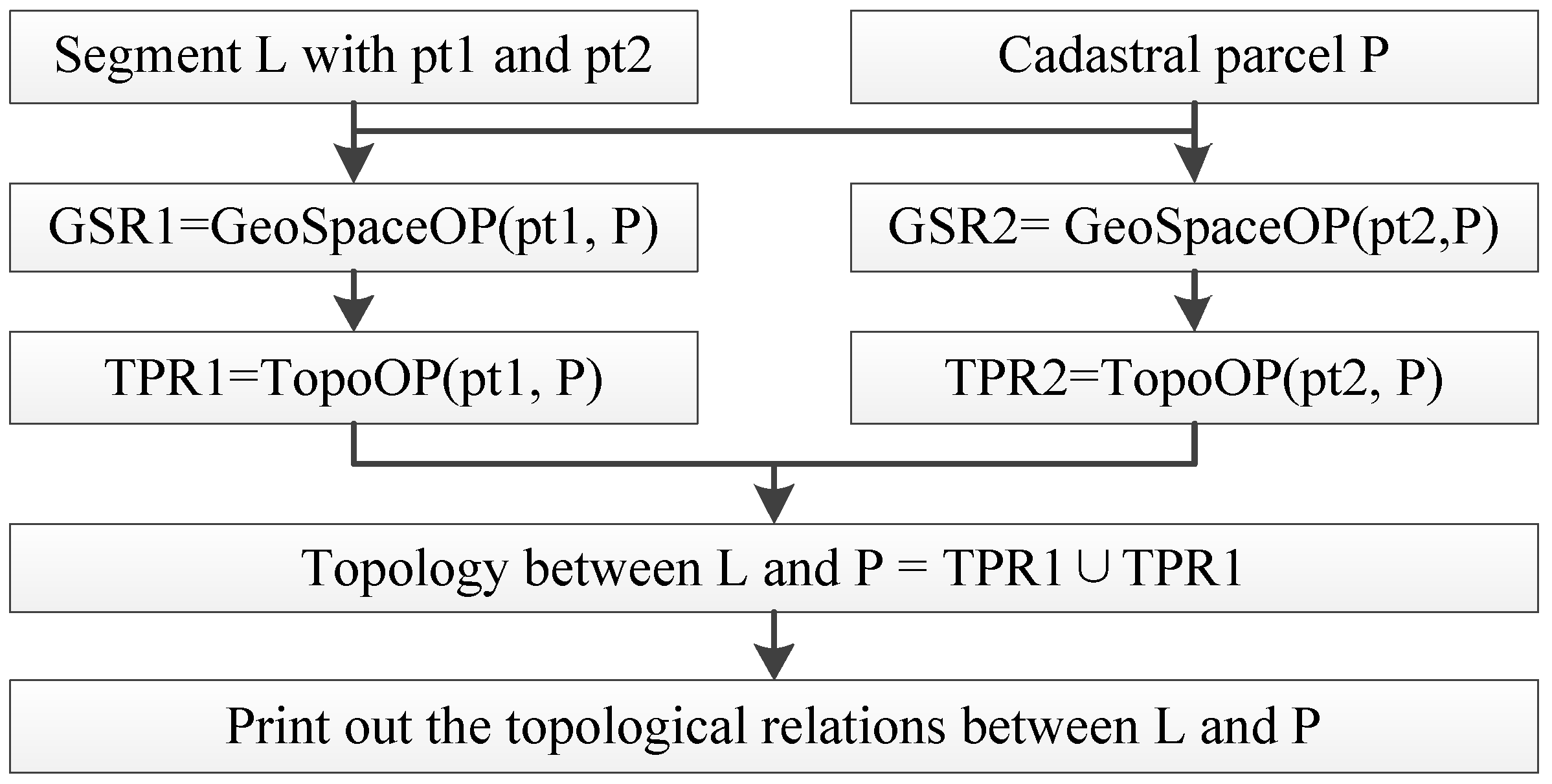

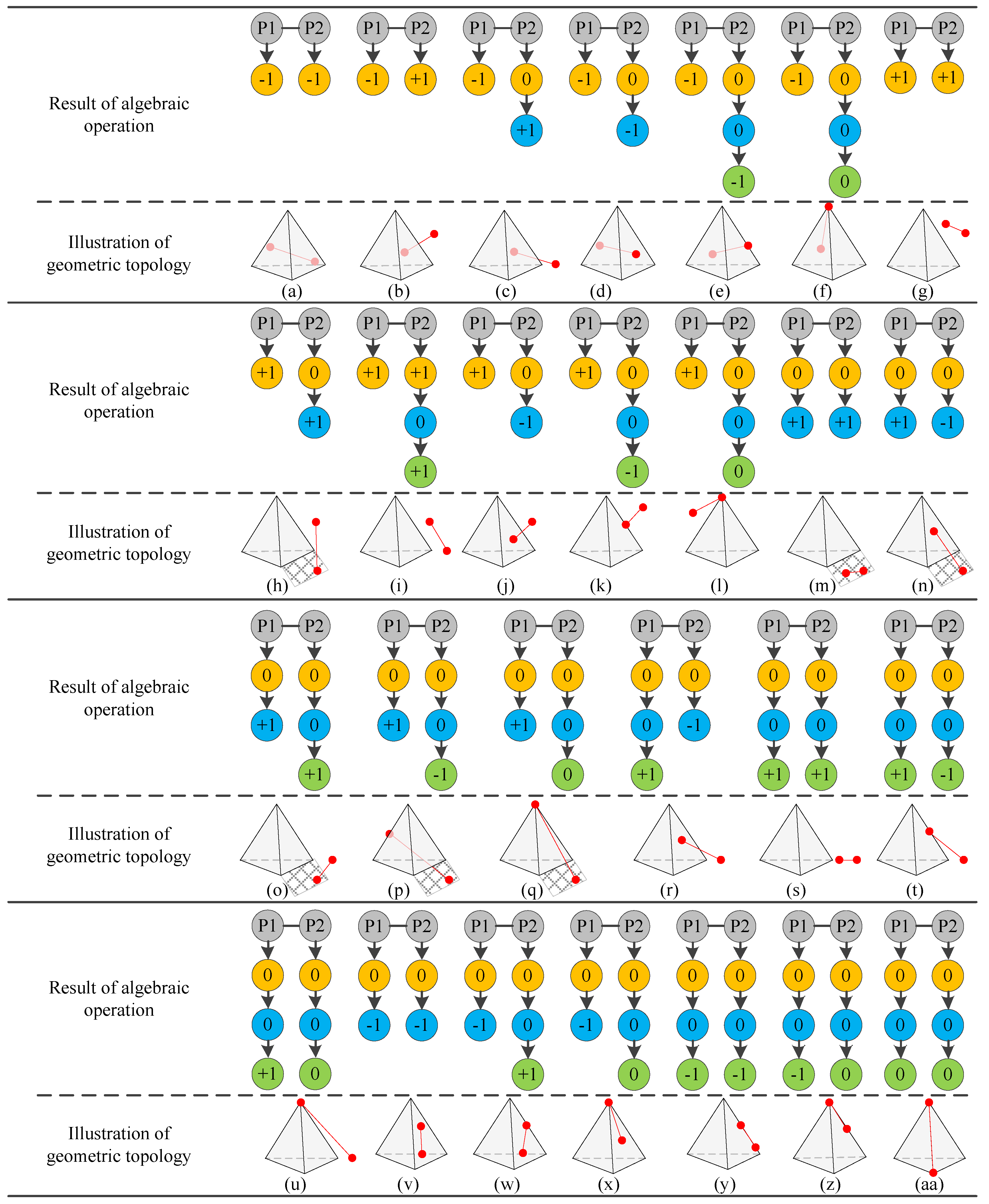
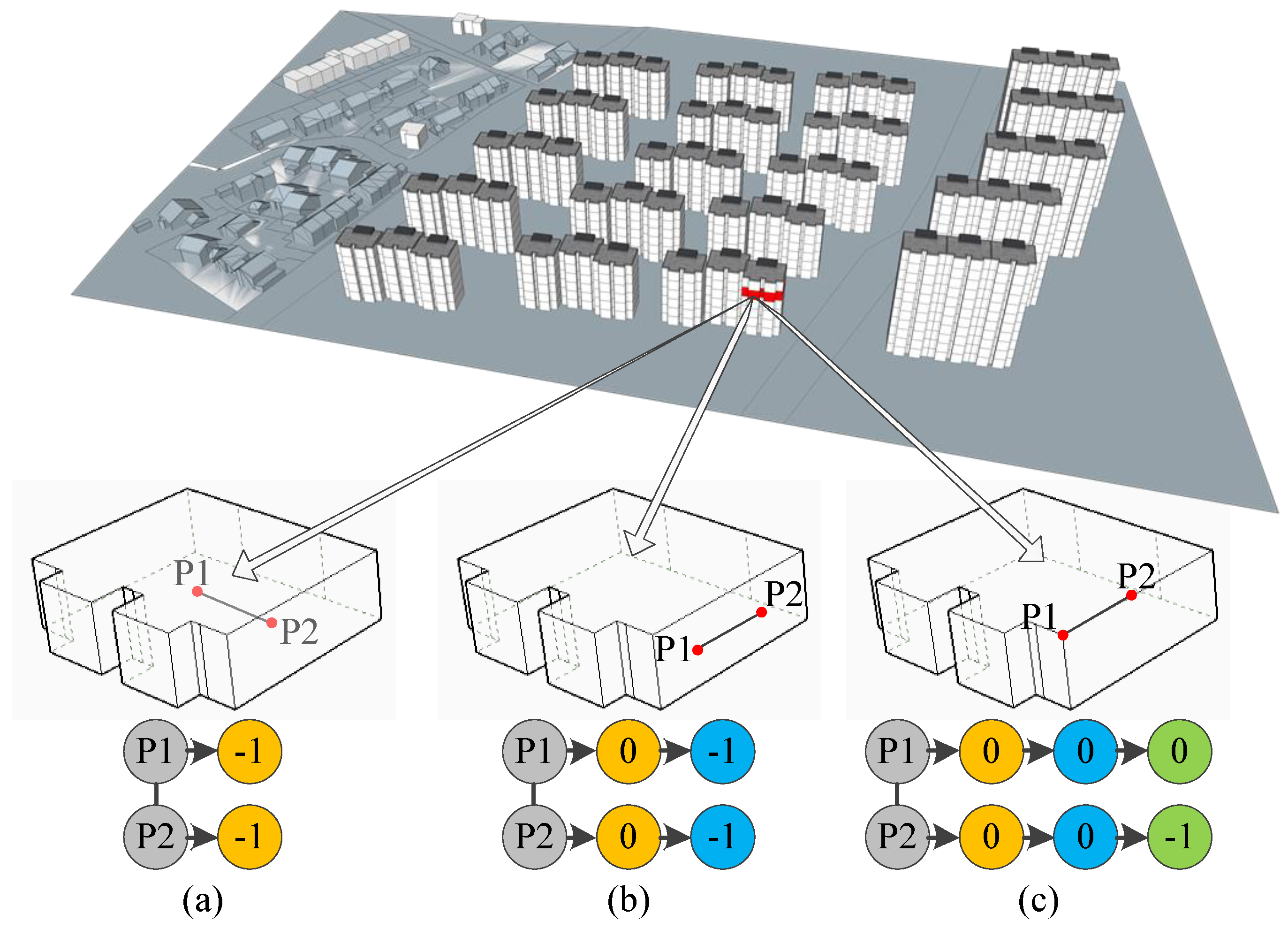
| Calculation Process | Outer Product | Sign of End Note | Topological Relation | Example in Figure 7 | Operation |
|---|---|---|---|---|---|
| First step | a boundary face and a point | +1 | outside | Figure 7a, Figure 7h | finished |
| −1 | inside | Figure 7g | finished | ||
| 0 | boundary | next step | |||
| Second step | a boundary line and a point | +1 | outside | Figure 7c, Figure 7i | finished |
| −1 | inside | Figure 7b, Figure 7k | finished | ||
| 0 | boundary | next step | |||
| Third step | two boundary points and a point | +1 | outside | Figure 7d, Figure 7j | finished |
| −1 | inside | Figure 7e, Figure 7l | finished | ||
| 0 | boundary | Figure 7f, Figure 7m | finished |
| Method | Multidimensional–Unified | Adaptive | Simplicity of Algorithm Structure |
|---|---|---|---|
| Models in Euclidean space | − | − | ++ |
| Geometric algebra (GA) model | ++ | ++ | + |
| GOTR model | ++ | ++ | + |
| Our model | ++ | ++ | +++ |
© 2019 by the authors. Licensee MDPI, Basel, Switzerland. This article is an open access article distributed under the terms and conditions of the Creative Commons Attribution (CC BY) license (http://creativecommons.org/licenses/by/4.0/).
Share and Cite
Shi, Z.; Hu, D.; Yin, P.; Wang, C.; Chen, T.; Zhang, J. Calculation for Multidimensional Topological Relations in 3D Cadastre Based on Geometric Algebra. ISPRS Int. J. Geo-Inf. 2019, 8, 469. https://doi.org/10.3390/ijgi8110469
Shi Z, Hu D, Yin P, Wang C, Chen T, Zhang J. Calculation for Multidimensional Topological Relations in 3D Cadastre Based on Geometric Algebra. ISPRS International Journal of Geo-Information. 2019; 8(11):469. https://doi.org/10.3390/ijgi8110469
Chicago/Turabian StyleShi, Zhifeng, Di Hu, Pengcheng Yin, Chun Wang, Taisheng Chen, and Jiyi Zhang. 2019. "Calculation for Multidimensional Topological Relations in 3D Cadastre Based on Geometric Algebra" ISPRS International Journal of Geo-Information 8, no. 11: 469. https://doi.org/10.3390/ijgi8110469
APA StyleShi, Z., Hu, D., Yin, P., Wang, C., Chen, T., & Zhang, J. (2019). Calculation for Multidimensional Topological Relations in 3D Cadastre Based on Geometric Algebra. ISPRS International Journal of Geo-Information, 8(11), 469. https://doi.org/10.3390/ijgi8110469




